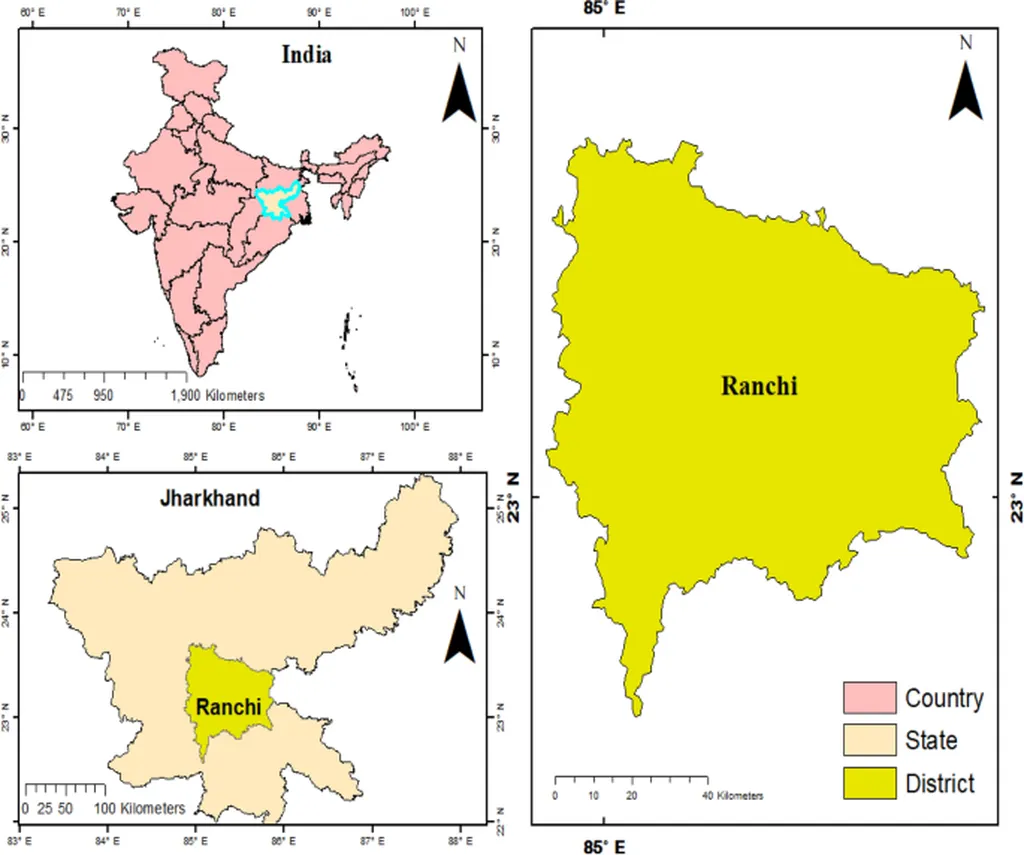In the heart of India, a groundbreaking study is reshaping how we understand and combat drought vulnerability, with significant implications for the energy sector and resource management. Dr. Shalwee, from the Amity Institute of Environmental Sciences (AIES) at Amity University Uttar Pradesh, has pioneered a novel approach that combines multi-criteria decision-making (MCDM) methods with Geospatial Artificial Intelligence (Geo-AI) to map drought vulnerability with unprecedented precision.
The study, published in *Discover Applied Sciences* (translated from Hindi as “Discover Practical Sciences”), focuses on the Ranchi district in Jharkhand, India, a region grappling with the multifaceted challenges of drought. By integrating environmental, social, and economic factors, Dr. Shalwee and her team have developed a comprehensive framework that promises to revolutionize drought vulnerability assessments.
“Our goal was to enhance the accuracy of drought vulnerability mapping to better inform resource management and mitigation planning,” Dr. Shalwee explained. The research identifies key parameters influencing drought vulnerability and employs MCDM entropy approaches to weight these parameters according to different drought types—meteorological, hydrological, and agricultural.
The findings are stark: 15% of Ranchi district is under severe drought conditions, while 71% is moderately affected. Hydrological drought emerged as the primary cause of vulnerability, underscoring the urgent need to bolster the district’s hydrological reservoirs.
The implications for the energy sector are profound. Accurate drought vulnerability assessments are crucial for managing water resources, which are intrinsically linked to energy production. Hydropower plants, for instance, rely heavily on consistent water flow, and droughts can significantly impair their efficiency. Moreover, thermal power plants require substantial water for cooling, making them vulnerable to water scarcity.
Dr. Shalwee’s research offers a roadmap for building resilience. By leveraging Geo-AI techniques, including machine learning and deep learning algorithms, policymakers and resource managers can analyze complex spatial and temporal patterns in drought-affected regions. This transformative approach enables targeted mitigation strategies, ensuring sustainable water resource management.
The study’s synthesis of spatial data from remote sensing and GIS with socio-economic, environmental, and hydrological criteria creates a holistic model for drought vulnerability. This comprehensive framework not only aids in immediate mitigation efforts but also paves the way for long-term resilience-building.
As climate change intensifies, the need for precise and actionable drought vulnerability assessments becomes ever more critical. Dr. Shalwee’s research, published in *Discover Applied Sciences*, sets a new standard in the field, offering valuable insights for policymakers and resource managers. By embracing AI-driven decision-making frameworks, we can address complex environmental challenges and secure a more sustainable future.
In the words of Dr. Shalwee, “This research highlights the potential of MCDM methods in generating high-resolution and accurate drought vulnerability assessments, significantly contributing to sustainable water resource management and resilience-building efforts.” The energy sector, in particular, stands to gain from these advancements, ensuring a more stable and sustainable future for all.

